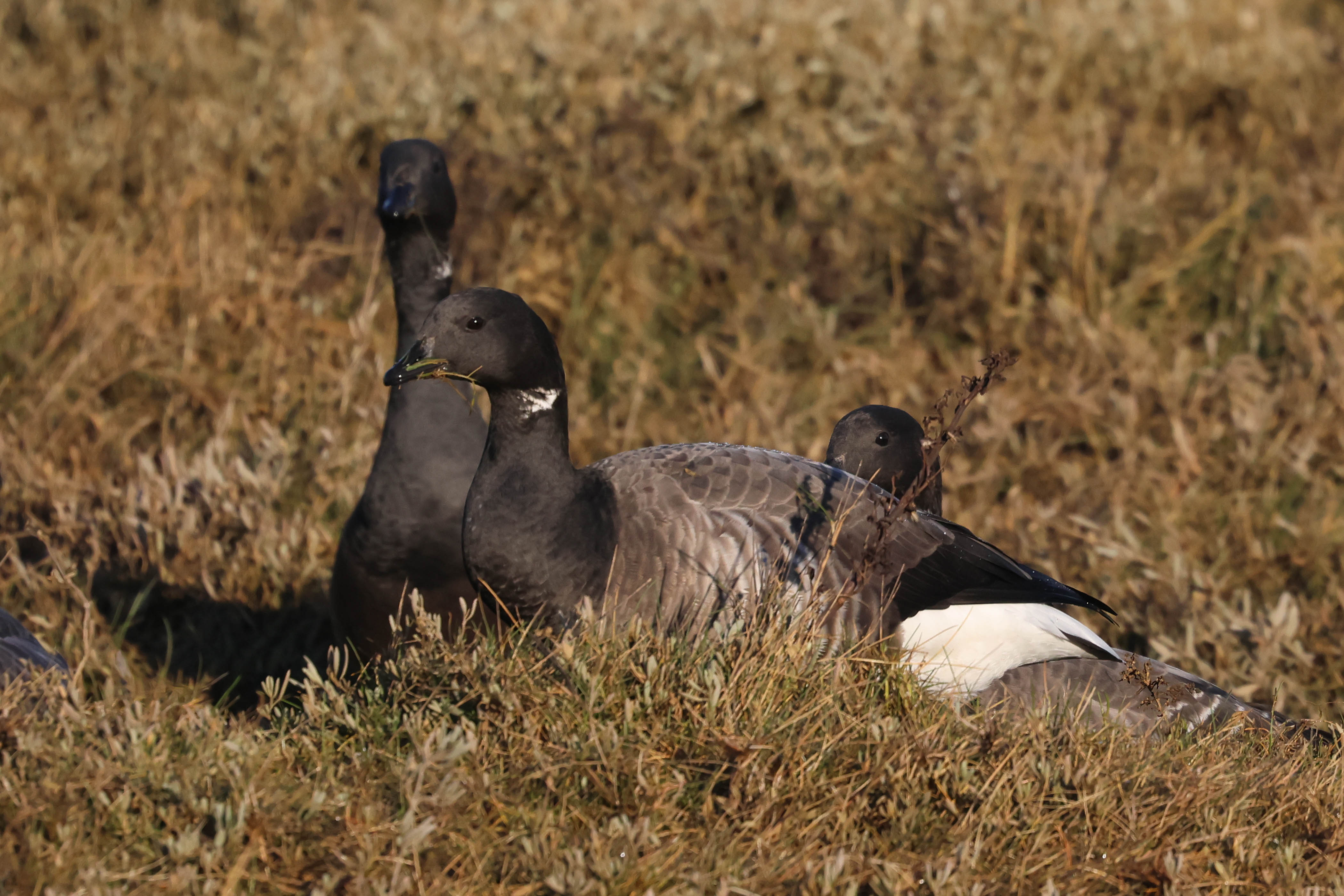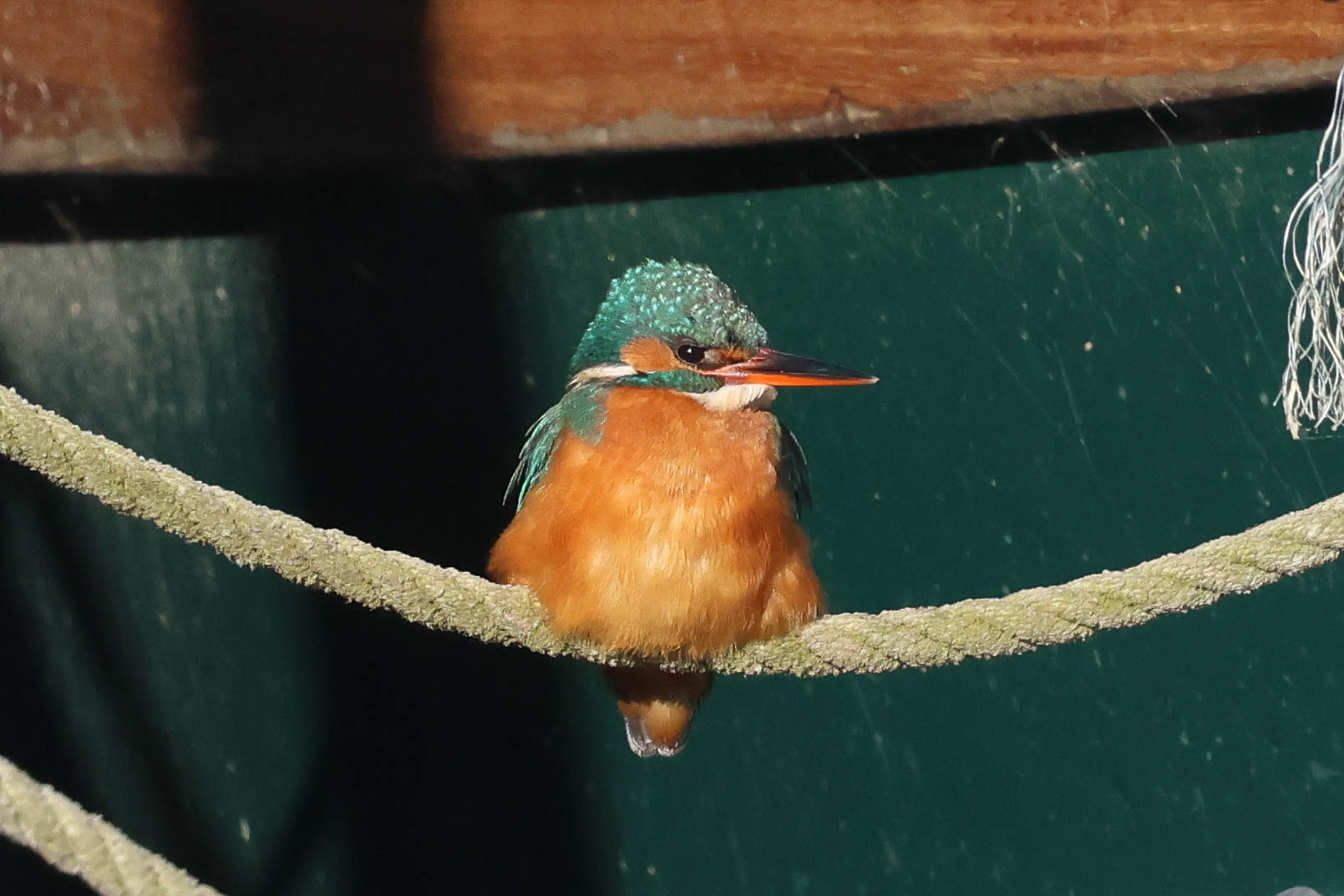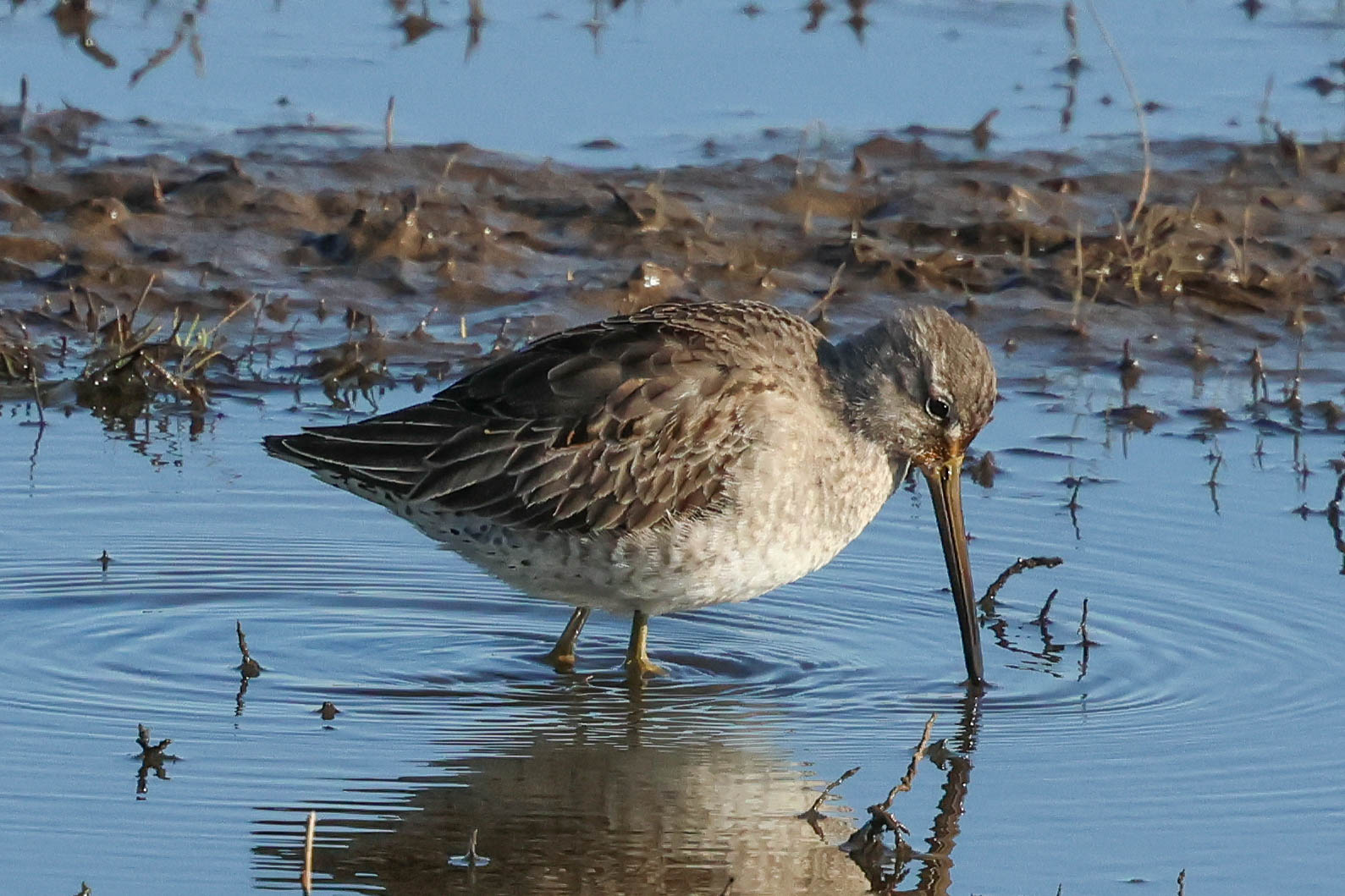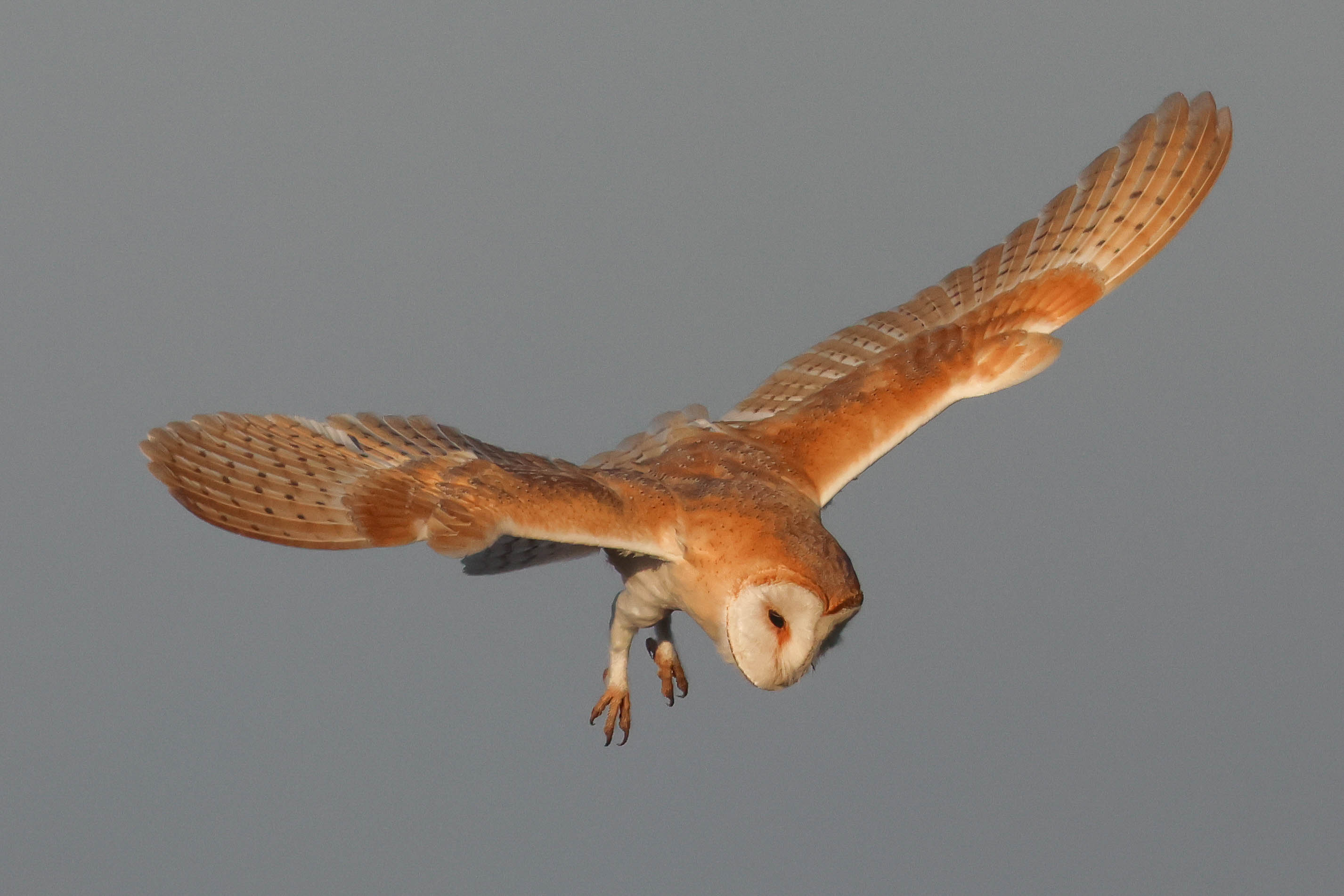Day 1 of a three-day Private Winter Tour in Norfolk. It was cold overnight, with a hard frost. The freezing fog thankfully burnt off before we met up and it was then a lovely bright and sunny winter’s day.
As everything was frozen first thing, we decided to start with a quick look at Blakeney Harbour. As we got out of the minibus, a Sparrowhawk whipped through, spooking a small flock of Greenfinches from the trees. From the west side, we looked out over the saltmarsh where there were a few Brent Geese, Wigeon and Teal. A large flock of Lapwing was gathered out in the middle and a small group of Golden Plover was with them, roosting over the tide. There were a few Curlew and Redshank too. Our first Marsh Harrier of the day was quartering the saltmarsh in the distance and three Little Grebes were diving in the channel.

We made our way round to the bank on the other side of the quay, avoiding the temptation to spend too long admiring the captive wildfowl. A Kestrel was hovering over the bank ahead of us. Several Meadow Pipits landed in the grassy field beyond and we looked over to see a pair of Stonechats there too. There were more waders roosting along the edge of the harbour channel. We put the scope on a small group of Oystercatchers and found several Black-tailed Godwits and a smart Bar-tailed Godwit with them. A Grey Plover was catching the sun on the mud just beyond them.
A little further on, we found a pair of Goldeneye in the harbour. There were several more Marsh Harriers out over the saltmarsh here. Lots more waders were now feeding out on the mud, as the tide was falling, including one or two Ringed Plover and lots of Dunlin . As we turned to head back, several Scandinavian Rock Pipits came up calling and circled round, one dropping down onto the saltmarsh in front of us but disappearing into a channel. A couple of Skylarks fluttered up singing.
Back at the quay, we stopped to admire a pair of Stonechats which were now perched up on the suaeda just across the harbour channel. A Kingfisher was fishing from the mooring rope of one of the boats, perched in the sunshine and occasionally plunging down into the water below. We stopped for a closer look through the scope.

We drove over to Cley next and parked at Walsey Hills. As we walked up the East Bank, there were lots of Wigeon out on the grass. We stopped to admire the Golden Plovers mixed in with the Lapwings and Starlings, and a few Ruff were feeding in between them. We could see a few people standing on the bank further up and before we even got to them, we could see the Long-billed Dowitcher on the near edge of the Serpentine, in front of them. We walked up and had a great view of it, feeding with a couple of Black-tailed Godwits in the grass. The Dowitcher was much smaller by comparison.
Something spooked all the birds, which took to the air in alarm, all the ducks, Lapwings and Golden Plovers. We saw the Dowitcher take off but lost it in the melee and didn’t see where it landed. When everything settled down again, we couldn’t find it. We had nice views of more Ruff and stopped to look at a Skylark which was feeding on the grass. We had already enjoyed nice close views of the Dowitcher and figured it might reappear later, so we continued on towards the beach.

There were more waders on Arnold’s Marsh – more Ringed Plovers plus a selection of Dunlin, Curlew and Redshank. A few Black-tailed Godwits had flown over onto here, but the Dowitcher was not with them. There was one drake Pintail right over the back, but we had better views of three busy upending on the brackish pools the other side, the drake flashing its long pin tail. There were a few Gadwall with the other ducks on here too.
We could see people watching the Snow Buntings out on the shingle ridge north of Arnold’s, but two walkers then proceeded right across in front of everyone and flushed them. The Snow Buntings flew round several times and then came straight towards us, about sixty of them, over the north end of the East Bank and off west. Thankfully they didn’t go too far, and after a couple of minutes they turned round and we watched them fly back, landing again where they had been before they were disturbed. We walked on to the beach and turned east along the path for a closer view.

As we got towards the Snow Buntings, we could see they were still a little jumpy so we stopped and got them in the scope. We were glad we did, as they then took to the air, whirling round a couple of times before setting off east. They only went a short way, landing on the shingle again a bit further along, where they shuffled round on the stones before settling down in the foot holes. Through the scope, we could just see some of their heads.
Two Snow Buntings then flew back and landed again on the slope behind us, where the light was better, and we had a great look at them through the scope now. We needed to start making our way back, which meant we had to walk past them. We went slowly, being careful not to disturb them, but they seemed completely unconcerned by our presence.

When we got back to the Serpentine, the Long-billed Dowitcher had indeed reappeared and was back feeding on the mud on the near edge. More great views through the scope. We were still watching it when we heard Bearded Tits calling behind us and we turned to glimpse one drop into the reeds. We walked over to the area where we had seen it go in, but despite hearing several calling on and off, none of them put in an appearance. It was a bit breezier now, so that didn’t help.

We made our way back to the Visitor Centre for lunch. It was a lovely place to sit in the sunshine and eat. There were several Avocets mixed in with the gulls on one of the islands on Pat’s Pool. The Whooper Swan was asleep at first, and half hidden behind the reeds, but after a while it woke up, stretched its wings and started to feed along the back edge where we could get a better look at it.
The plan was to finish the day at the harrier roost. We still had a bit of time before we needed to be there, and we needed to manage the amount of walking, so we headed over to North Point and scanned the pools from the car park. A pair of Egyptian Geese were out on the grass beyond the gate and several flights of Brent Geese flew in from the saltmarsh beyond and landed on the pool to the east. There were a few Curlew and lots of Lapwings on the mud. A Common Snipe flew over but we couldn’t see any around the edges of the pools today. Five Rock Pipits dropped in to bathe in the shallow water.
It was time to head down to the roost, so we parked on the concrete pad and walked down Garden Drove. The old pig field next to the track was being cultivated and there were lots of Pied Wagtails taking advantage where the grass had been turned over. As we arrived at the edge of the saltmarsh, a male Marsh Harrier was quartering out in front of us. A flock of Golden Plover was gathered out in the middle, several Little Egrets were scattered around and we eventually managed to find a couple of Great White Egrets too, when they emerged from down in the muddy channels. A couple of Brown Hares were chasing round out on the saltmarsh too.
A Barn Owl appeared, hunting along the near edge of the saltmarsh, and put on a great display, back and forth right in front of us, dropping down sharply into the grass a couple of times although it didn’t catch anything while we were watching. The first of three Barn Owls we would see here, one was rarely out of view although mostly further back. Someone spotted a Merlin perched on a bush out in the middle which showed well in the scope. Then a second Merlin appeared on a bush a bit further out, and we watched it chasing pipits out over East Hills.

There were several Marsh Harriers flying round out over the saltmarsh at first, but gradually they seemed to settle down. We could see several standing out on the grass in the last of the sunshine and got the scope on a smart male. The Pallid Harrier had been late coming in to roost last night, so we waited until just after the same time tonight hoping to catch sight of it, but there was no sign and nor were there any Hen Harriers in yet. They were obviously staying out hunting late, taking advantage of the bright, still evening. The light was starting to go, and the temperature was dropping, so we decided to head back. We might have another go another night.
















